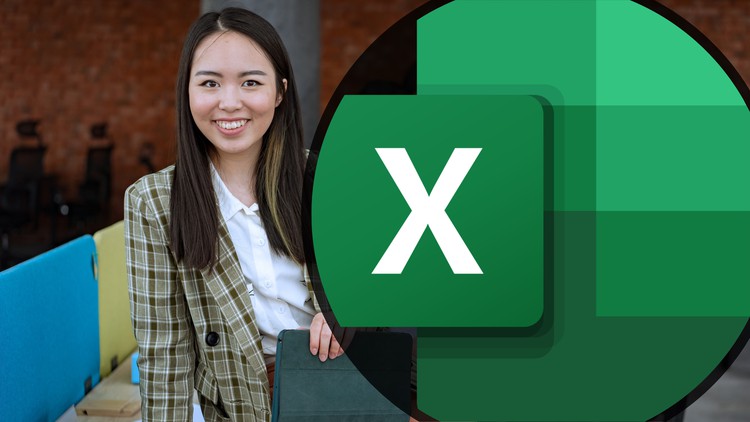
Learn How to Create an Accounting Worksheet Using Microsoft Excel from a Certified Public Accountant (CPA)
What you will learn
How to navigate Microsoft Excel or other computerized spreadsheet like Google Sheets
How to create an accounting system in Excel from a blank worksheet including a general journal, trial balance, general ledger, subsidiary ledgers and more
How to enter journal entries related to common transactions and list the data input forms often used to enter them into accounting software like QuickBooks
How to enter two months worth of data input into our accounting system
How to do two month of bank reconciliations, comparing the process to how accounting software like QuickBooks would accomplish the task
How to enter period end adjusting journal entries
Create financial statements
Description
This course will walk through a comprehensive accounting problem using Microsoft Excel in a step-by-step process. You may also use another spreadsheet software like Google Sheets.
Learners will learn how to navigate Microsoft Excel as well as how to create a well-designed accounting worksheet, complete with a general journal, trail balance, general ledger, subsidiary ledgers for accounts receivable, accounts payable, & inventory, financial statements and much more.
Excel is a very good tool to learn accounting because it is much more transparent than a database program, like accounting software, QuickBooks being a common example of accounting software.
As we enter transactions into our Microsoft Excel worksheet, we will discuss how the data input would commonly be entered into accounting software like QuickBooks and what data input forms would normally drive the transactions.
The course will start out from a blank Excel Worksheet. We will build the outline for our accounting system from the blank spreadsheet.
For each new step in the process, you will have access to a downloadable Excel Workbook, containing at least two tabs, one with the answer, the new steps being completed, the other starting out where the prior presentation left off.
Therefore, you can complete the entire problem starting from one blank spreadsheet, or you can jump forward in the problem and rework any component of the problem by downloading the related worksheet at that point in the process.
After constructing the outline of our accounting worksheet, the first section will discuss the most common accounting transactions and the data input form often used in accounting software, like QuickBooks, to enter them, common data input forms including invoice, bill, deposit. . .
We will then start our comprehensive problem, constructing a new Excel worksheet and entering beginning balances into it, imagining that we had a prior accounting system which we are now converting to our new accounting system in Excel.
We will then enter two-months worth of data input. When entering the accounting data we will create the journal entry, post it to the trial balance, giving us a good look at which accounts are impacted, post to the general ledger, and make adjustments to any subsidiary ledgers needed.
We will also update the financial statements periodically.
For the second month of operations, we create a bit more complex trial balance, allowing us to calculate both the year-to-date numbers, including both months of data input, and the current period numbers, showing income statement accounts for just the second month of operations.
After entering two months of data input, we will process two bank reconciliations, using mock bank statements. As we construct our bank reconciliations, we will discuss how accounting software often accomplishes this task.
Next, we will adjust our worksheet to enter period end adjusting journal entries as well as reversing entries. For each adjusting entry we will consider the reasons for it and how to set up the accounting system so that our adjusting entries do not mess up the data input process in the accounting department.
After entering the adjusting entries we will construct our financial statements.
Content